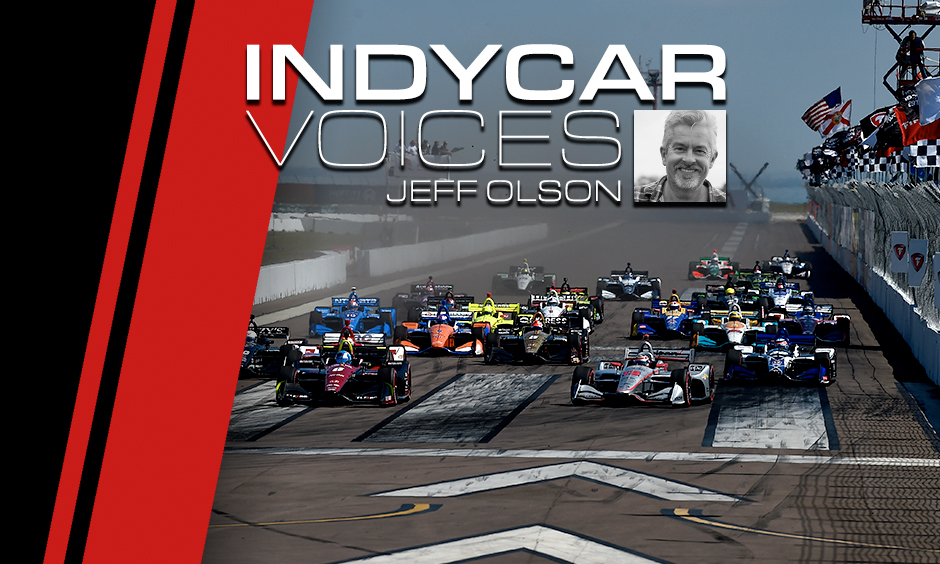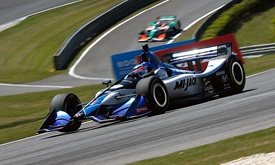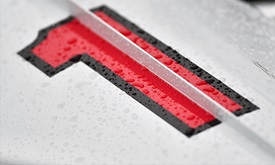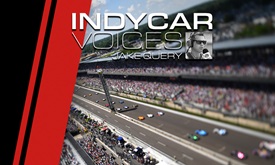Barber's brilliance makes us glad we got it wrong
APR 25, 2018
In October 2007, a few INDYCAR teams arrived at a road course in the South amid rumors that the series was considering a race there. The facility had been in use for four years, most notably for AMA Superbike races, and was renowned for its beauty.
But the people who tested that day weren’t convinced it would work as a race venue. For offseason testing purposes, yes, it was suitable. It wasn’t a terribly long haul from Indianapolis, and the fall and spring weather was warm enough for testing. But for a race? Eh.
They cited three basic arguments against it: 1) It’s a motorcycle track, too tight and compact for cars, no passing zones. 2) It has no grandstand. Where will they put the fans? And 3) It’s in Alabama. Talladega Superspeedway is 36 miles away. It will never sell.
Man, were we wrong about Barber Motorsports Park.
Eight years after the first Verizon IndyCar Series race at Barber, the Birmingham circuit has become a gem on the schedule. What most thought wouldn’t work about the place instead became its strength. The tight turns and long straights that work for bikes have made the 17-turn, 2.3-mile course a favorite among drivers.
And that concern about a lack of seating? We underestimated race fans. The hill outside Turns 2-3-4 is its own grandstand. During Honda Indy Grand Prix of Alabama qualifying, when the weather was pleasant and the track reported a Saturday record attendance of 34,240, the hill was crowded with Roll Tide and Auburn awnings. Same for the trees outside Turns 12 and 13. The Alan Wilson-designed course makes natural grandstands of the terrain, and fans take to them.
But where we truly misjudged Barber was in our thought that people in NASCAR country wouldn’t be interested in any other form of racing. They will be, and they have been. The Indy car race draws a diverse, knowledgeable crowd that continues to grow with each passing year. Fans take advantage of everything the race and facility have to offer, whether it’s the astonishing Barber Vintage Motorsports Museum, the classic car show, the Ferris wheel or the food trucks. Like Long Beach, Toronto and Elkhart Lake, Barber is a festival that also contains an auto race.
Perhaps our misjudgment of this place and its people is a product of our bias. I can attest and admit to this. Nine years ago, I left Indianapolis for northern Florida. Since then, I’ve traveled extensively through the South, mostly on back roads, visiting places about which I had preconceived notions – often negative – only to be proven wrong.
Birmingham is one of those places. At that first test in 2007, I expected something gloomy. What I discovered instead was a city alive with culture and interesting people. It’s a vibrant place with a unique feel. Much like Memphis, Nashville, Charleston, Asheville, Savannah and Chattanooga, Birmingham has a distinct Southern charm. One of the joys of traveling through the South is discovering at every stop that preconceived ideas and opinions don’t fit. It’s a surprising part of the country for people new to it.
While escaping Hurricane Irma last year with millions of other Floridians, I found myself in a mom-and-pop motor lodge in a small town in North Carolina. Every license plate in the lot was from Florida. The owners did all they could to help their customers, and they refused to gouge. They even held my room when I left, just in case I couldn’t get far and had to return.
The little town had a fantastic museum with a powerful display honoring the Trail of Tears, the route of the forced relocation of thousands of Native Americans from the Southeast in the 1800s. The town had one-of-a-kind shops and restaurants in its historic downtown storefront. It had sidewalk cafes and an impressive library. It was the complete opposite of what I thought it would be. Instead of worrying about a hurricane, I forgot there was one. The South is not what I thought it was. For that, I’m grateful.
We owe a debt of gratitude to George Barber, his Barber Motorsports Park team, the city of Birmingham and the state of Alabama. This is how to put on a race, and this is how to turn a new venue into a hit. Know your customers, deliver a product to them, and – even if the weather doesn’t cooperate – they’ll return, year after year.
Some of us missed the boat on Barber, but we’re glad we were wrong.



















